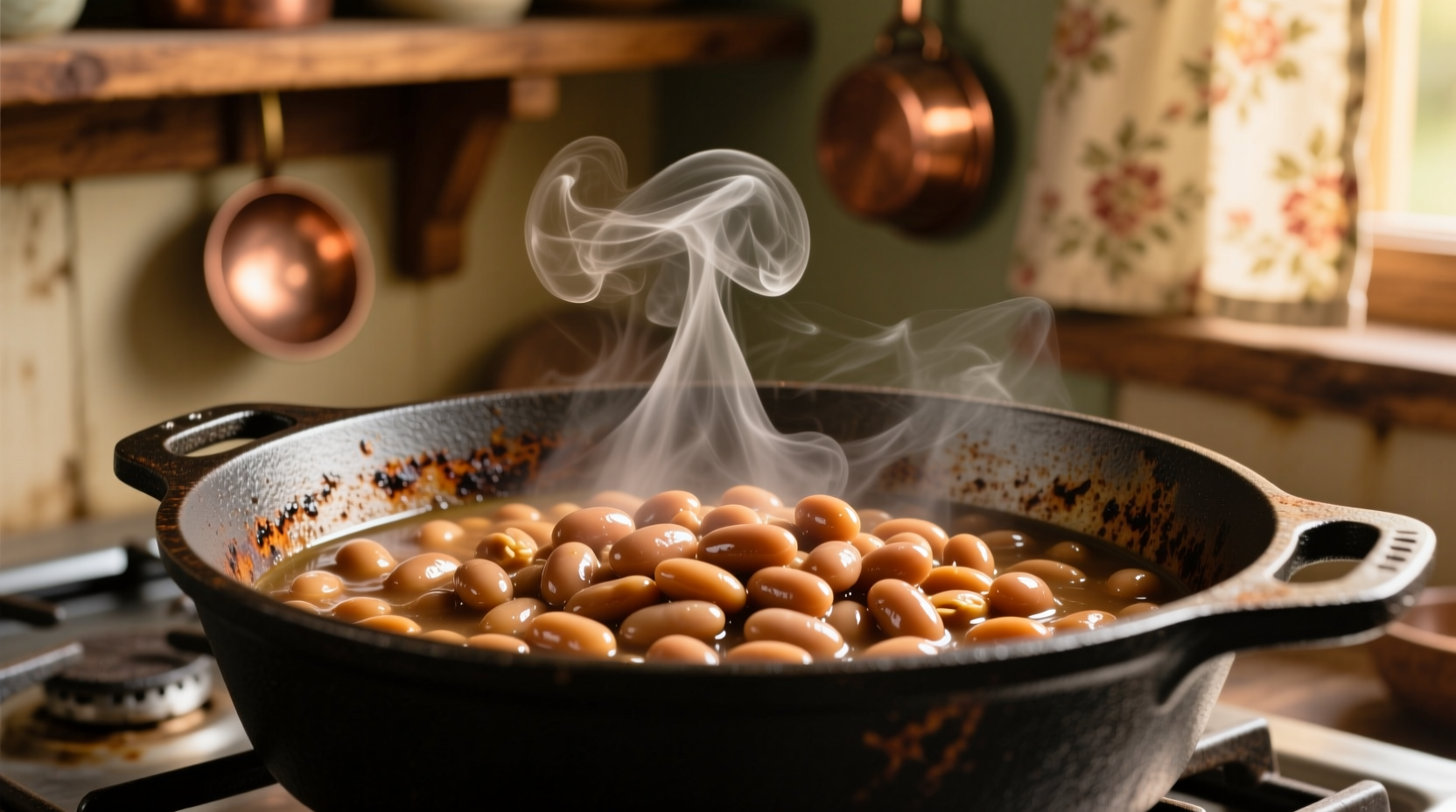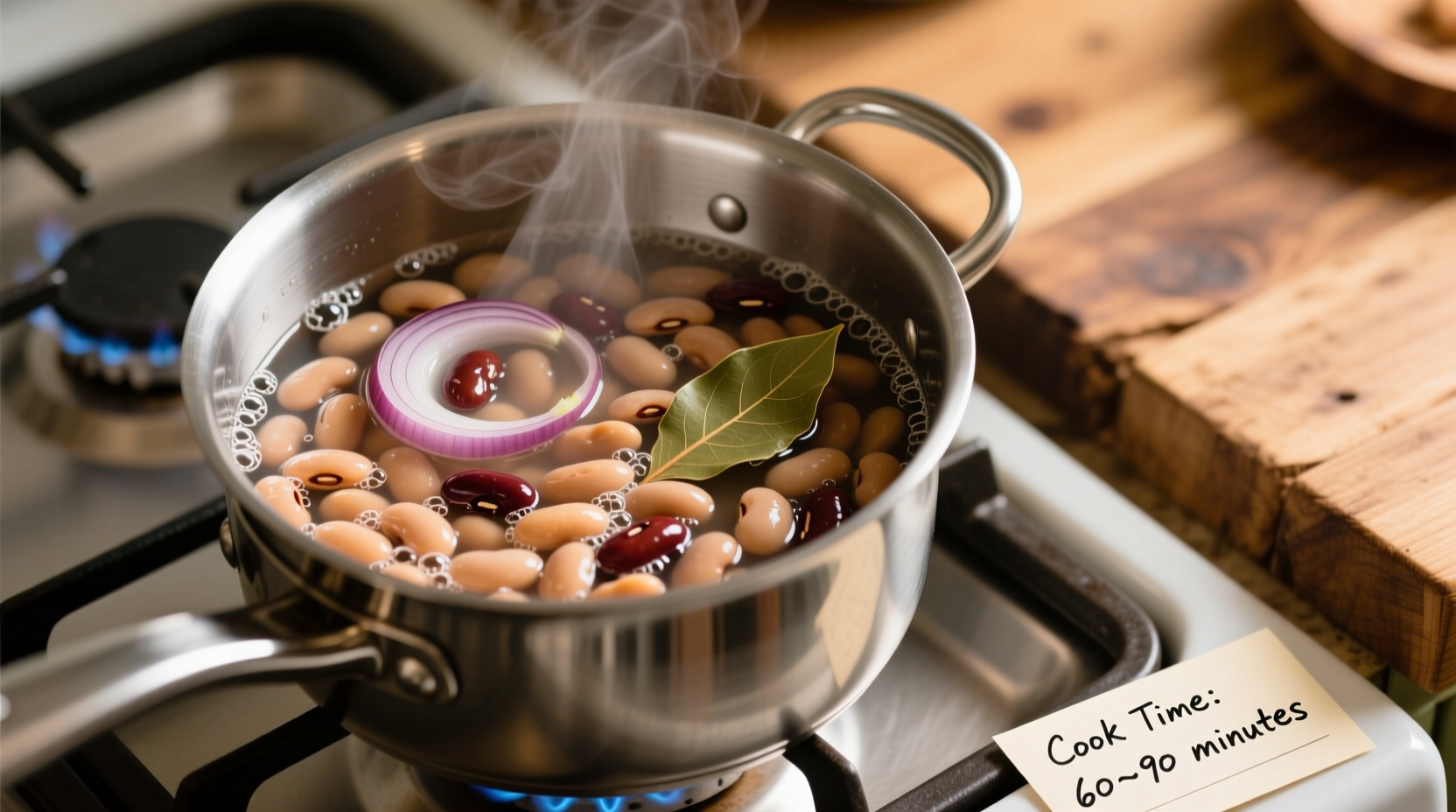Most dried beans take 45-90 minutes to cook on the stove after soaking, but exact times vary significantly by bean type. Small beans like lentils cook in 20-30 minutes, medium beans like pinto need 45-60 minutes, and large beans like lima require 60-90 minutes. Never skip the soaking step for kidney beans due to toxin concerns, and always check for tenderness starting at the minimum cooking time.
Discover exactly how long to cook beans on stove for perfect results every time. This comprehensive guide gives you precise cooking times for 12 common bean varieties, plus professional techniques to avoid common pitfalls that leave beans undercooked or mushy. You'll learn the science behind bean cooking times, visual doneness indicators, and how to adjust for high altitudes or hard water.
Why Bean Cooking Times Vary So Much
Understanding what affects cooking time helps you achieve consistent results. Three key factors determine how long to cook beans on stove:
- Bean variety - Smaller beans cook faster than larger ones
- Age and storage - Older beans take longer to soften (beans stored over 1 year may never fully soften)
- Water chemistry - Hard water can add 15-20 minutes to cooking time
According to USDA food safety guidelines, proper cooking destroys lectins in kidney beans that can cause food poisoning. This makes precise timing crucial for certain varieties.
| Bean Type | Soak Time | Cook Time | Doneness Indicator |
|---|---|---|---|
| Black Beans | 6-8 hours | 45-60 minutes | Skin cracks when blown on |
| Pinto Beans | 6-8 hours | 50-70 minutes | Creamy interior, intact skin |
| Chickpeas | 8-12 hours | 60-90 minutes | Mash easily with fork |
| Lentils (brown) | No soak needed | 20-30 minutes | Hold shape but tender |
| Kidney Beans | 8+ hours | 55-75 minutes | No resistance when bitten |
Step-by-Step Stovetop Bean Cooking Method
Follow this professional technique for perfectly cooked beans every time. This method addresses common mistakes that lead to uneven cooking or split skins.
Preparation Phase: The Critical First Step
Sorting and proper soaking make the difference between tender beans and frustratingly hard ones. Place 1 pound dried beans in a large bowl, cover with 3 inches of cold water, and add 1 tablespoon salt. Soak for 8-12 hours at room temperature. USDA food safety guidelines specifically recommend this minimum soak time for kidney beans to neutralize toxins.

Active Cooking Process: Timing is Everything
After soaking, drain and rinse beans thoroughly. Place in a heavy-bottomed pot with fresh water (use 3 cups water per 1 cup soaked beans). Bring to a gentle boil, then reduce to a simmer. Here's the precise timing protocol:
- First 30 minutes: Skim foam that rises to the surface
- After 30 minutes: Add 1 teaspoon salt (adding salt earlier can toughen skins)
- Check tenderness starting at minimum cooking time
- Test by blowing on a few beans - properly cooked beans will crack slightly
According to Cornell University's food science department, adding acidic ingredients like tomatoes before beans are fully cooked can increase cooking time by up to 50%. Wait until beans are tender before adding vinegar, wine, or citrus.
Troubleshooting Common Bean Cooking Problems
Even with perfect timing, issues can arise. Here's how to fix them based on America's Test Kitchen research:
Beans Still Hard After Cooking
If your beans remain hard despite proper timing, check these factors:
- Water hardness - Install a water softener or add 1/4 teaspoon baking soda per pound of beans
- Bean age - Beans older than 1 year may never soften properly
- Acidic ingredients - Added too early in cooking process
Beans Becoming Mushy
Prevent overcooking with these techniques:
- Reduce heat to maintain only a gentle simmer (rapid boiling breaks skins)
- Remove from heat immediately when tender
- Cool quickly by spreading on a baking sheet
Altitude Adjustments and Special Considerations
Cooking at high altitudes requires specific modifications. For every 1,000 feet above sea level, increase cooking time by 5-10% according to Colorado State University's extension program. In Denver (5,280 feet), add 25-30 minutes to standard cooking times.
Never cook kidney beans in a slow cooker without pre-boiling for 10 minutes first. FDA guidelines warn that slow cookers don't reach the temperature needed to destroy phytohaemagglutinin, a toxin in raw kidney beans.
Storing and Using Cooked Beans
Proper storage maintains texture and flavor. Cool beans completely in their cooking liquid, then store in airtight containers with 1 cup cooking liquid per 2 cups beans. They'll keep for 5 days refrigerated or 6 months frozen.
The cooking liquid (called "pot liquor") contains valuable nutrients and flavor. Freeze it in ice cube trays for adding to soups and stews. This technique, documented in UC Davis's food preservation studies, boosts nutritional value while reducing food waste.
Frequently Asked Questions
Can I cook beans without soaking them?
Yes, but cooking time increases by 25-50%. Unsoaked beans typically need 2-3 hours of simmering. The exception is lentils, which cook perfectly in 20-30 minutes without soaking. Always pre-boil kidney beans for 10 minutes before slow cooking to destroy toxins.
Why do my beans always split during cooking?
Bean skins split primarily from two causes: adding salt too early in cooking, or boiling too vigorously. Start with cold water and bring beans to a gentle simmer gradually. Add salt only after the first 30 minutes of cooking. Maintain a gentle simmer where only a few bubbles break the surface occasionally.
How can I tell when beans are perfectly cooked?
The most reliable test is the "blow test" - remove several beans, blow on them gently, and watch for small cracks to form in the skins. Perfectly cooked beans should be tender throughout with no resistance when bitten, but still hold their shape. They should mash easily with a fork but not disintegrate.
Does adding baking soda help beans cook faster?
Yes, but use sparingly - 1/4 teaspoon per pound of beans maximum. Baking soda creates an alkaline environment that softens bean skins faster, particularly helpful in hard water areas. However, too much can create mushy beans and destroy nutrients like vitamin B. It's better to address the root cause (hard water or old beans) when possible.











 浙公网安备
33010002000092号
浙公网安备
33010002000092号 浙B2-20120091-4
浙B2-20120091-4